HTML Scrolling Menu Css3Menu.com
Graphical analysis of some of the elements in the Voynich 'Baths' section.
Back to index page
The 'Baths' or balnealogical section of the manuscript begins on folio 75r and runs through to folio 84v. Folio 85r may be a part of this section but has no imagery. 85v and 86r provide a sort of bridging section through to the Rosettes diagram. So this 'Baths' section consists of 20 pages (drawn on both sides of 10 folios).
There are many illustrations arranged through these pages, so let us just look at some of the common graphical elements. Many people seem to want to read each image independently as meaning something entirely unconnected with the other pictures in this section. This is entirely foolish as the imagery obviously coheres, and although the creator of the manuscript embellishes and changes the way he depicts the graphic elements throughout the set of images, their common features are immediately obvious.
Let us first look at the large or communal baths. There are 21 of these depicted. I will reproduce them quite small here (and at varying scales) so we can see them all together in one view.
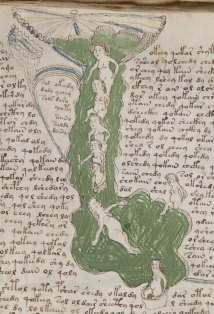 1
1
 2
2
 3
3
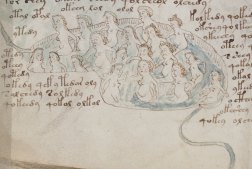 4
4
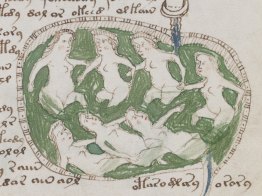 5
5
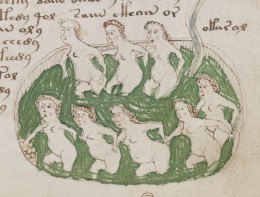 6
6
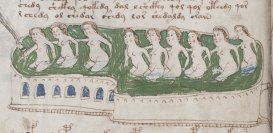 7
7
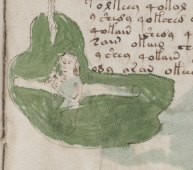 8
8
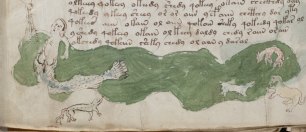 9
9
 10
10
 11
11
 12
12
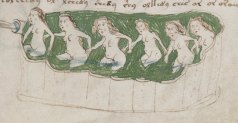 13
13
 14
14
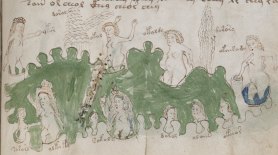 15
15
 16
16
 17
17
 18
18
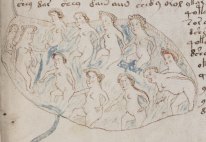 19
19
 20
20
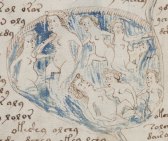 21
21
These are in the order they appear in the manuscript. We can immediately recognise two separate groups of communal baths. One coloured with a greenish tinge and the other blue. There are 15 with green water and 6 blue. Several people have suggested these were the same pigment, but it is obvious when we see them together that the different colours are intended. They probably distinguish between two types of bath. Thus the green could indicate a sulphur rich hot bath and the blue, say, cold water.
The baths also can be divided according to their form. Some have rough flat edges suggesting they are rock cut pools, while others are the the form of constructed basins.
Pools - 1 2 3 4 5 6 8 9 10 11 15 161 17 18 19 20 21
Basins - 7 12 13 14
Where more than one communal bath appears on a single folio, they are interconnected by some pipework or channel of water.
This is the case on five pages - f75r, f75v, 78r, 81r, 84r and 84v.
How does the water get into these baths ? What is the source for the water ?
With many of the baths water appears to enter simply through a stream or a pipe, however, a number of them are depicted with the water emerging from what appears to be two kinds of matrices. The first appears like an umbrella, while the second appears as little circles like bunches of grapes, a pineapple or a multi-breasted form.
Firstly, the 'umbrella forms':-

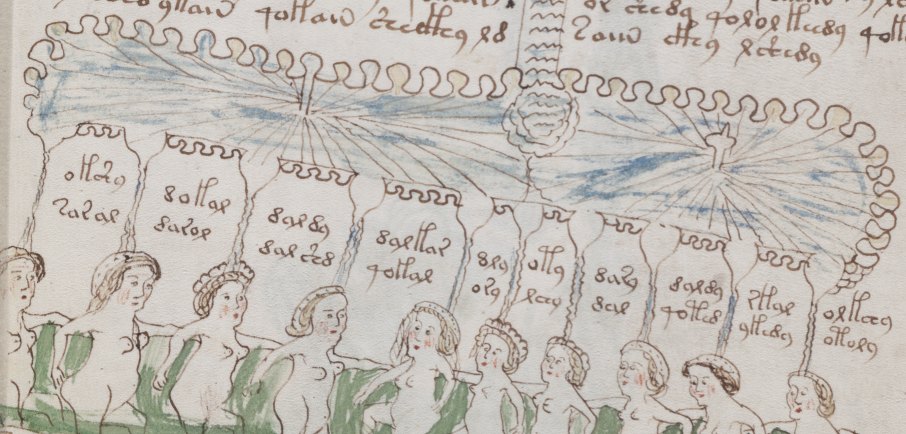

Secondly, the 'pineapple' or 'multi-breasted forms':-
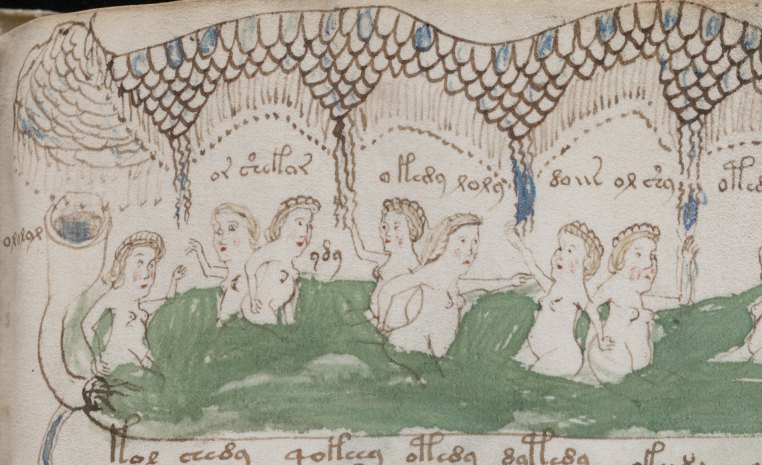
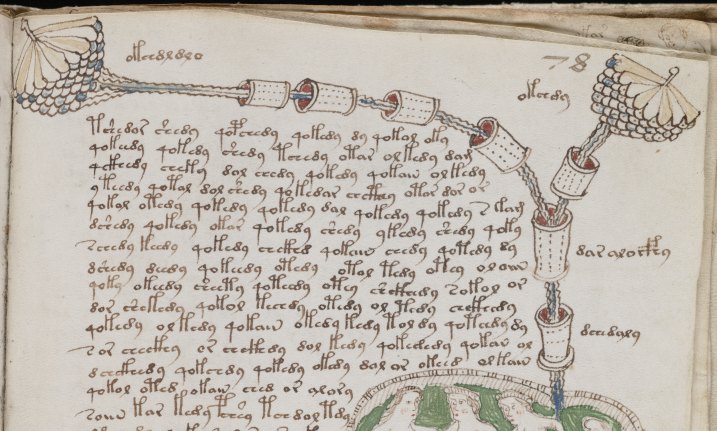
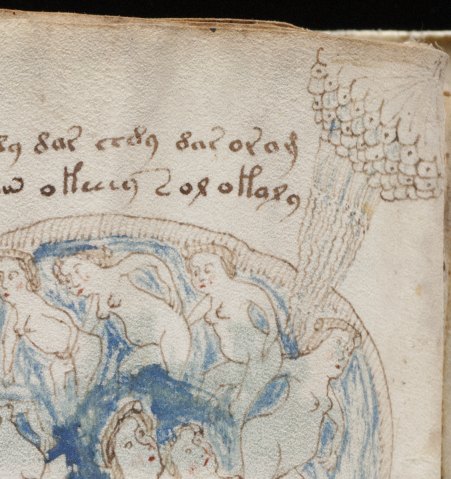
We see here how the 'pineapple' form in some cases is topped by the 'umbrella form' so these may not be two separate structures but merely two ways the Voynich creator chose to represent this matrix. We can see examples of this also on
f86r. We can find examples of similar structures in the Peter of Eboli manuscripts, but it would be rather interesting if these could be identified with actual real structures underground in the bathing complex at Pozzuoli. These look like dripstone curtains, or stalactites found in limestone caves, but in the case of Pozzuoli we have a volcanic landscape, and these must correspond to different types of geological feature.
Here is a photograph of a ceiling from one of the underground rooms at Pozzuoli.

This is over a room with a complex architecture, with this "umbrella" ceiling and covered with a mosaic. Below, along the perimeter, there are some baths, while in the corners there are four niches, probably used for steam inhalations.
 1
1
 2
2
 3
3
 4
4 5
5
 6
6
 7
7
 8
8 9
9
 10
10 11
11
 12
12
 13
13 14
14
 15
15
 16
16 17
17
 18
18
 19
19 20
20
 21
21





